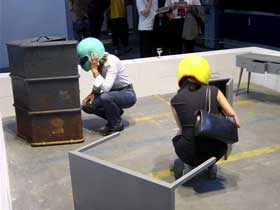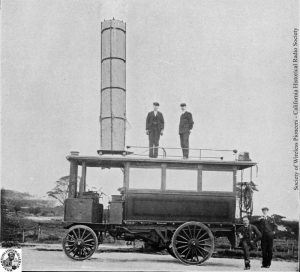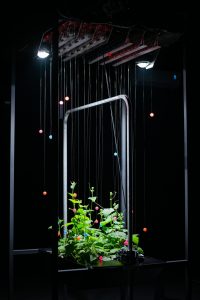Audio/Viscera explore ways in which sound can be treated as an architectural material. The user wears a helmet containing wireless headphones. Their motion, tracked by a computer vision system, determines the sound they will hear and it serves the secondary purpose of redefining the soundscape.

Sounds (both live and recorded audio) are assigned to specific virtual locations, and are broadcast to the headphones as if they actually inhabited that space. Physical objects and images guide the user to these virtual sounds in the gallery. Somes sounds move through the soundscape, responding to the user’s motion and allowing her/him to discover and alter the virtual audio landscape.
Audio/Viscera aims to give architectural elements (like a wall or column) a voice. This is achieved through two channels:
– a map of the audio events taking place in the city of Munich: as the user approaches the screen, s/he can hear (pre-recorded) sounds taking place at various locations throughout the city.
– live but distant sounds are translated from throughout the exhibition and exterior spaces into the soundscape. The user is thus able to cross physical/architectural boundaries with sound, much as a window allows the user’s eye to cross physical boundaries in conventional architecture. These sounds will be connected to visual clues in the form of images or animations, or they will respond to the user’s motion.
This project explores the interaction between virtual and real space through sound.
By John Rothenberg.
Related: audio space + audiotag + audio graffiti, Mapamp, Sonic city, sound mapping, Aura, Akitsugu Maebayashi’s audio work.







